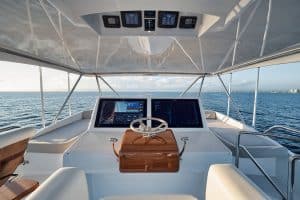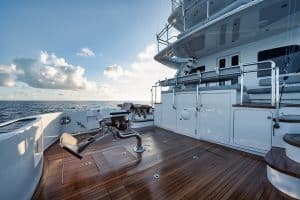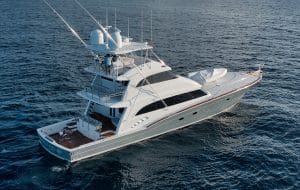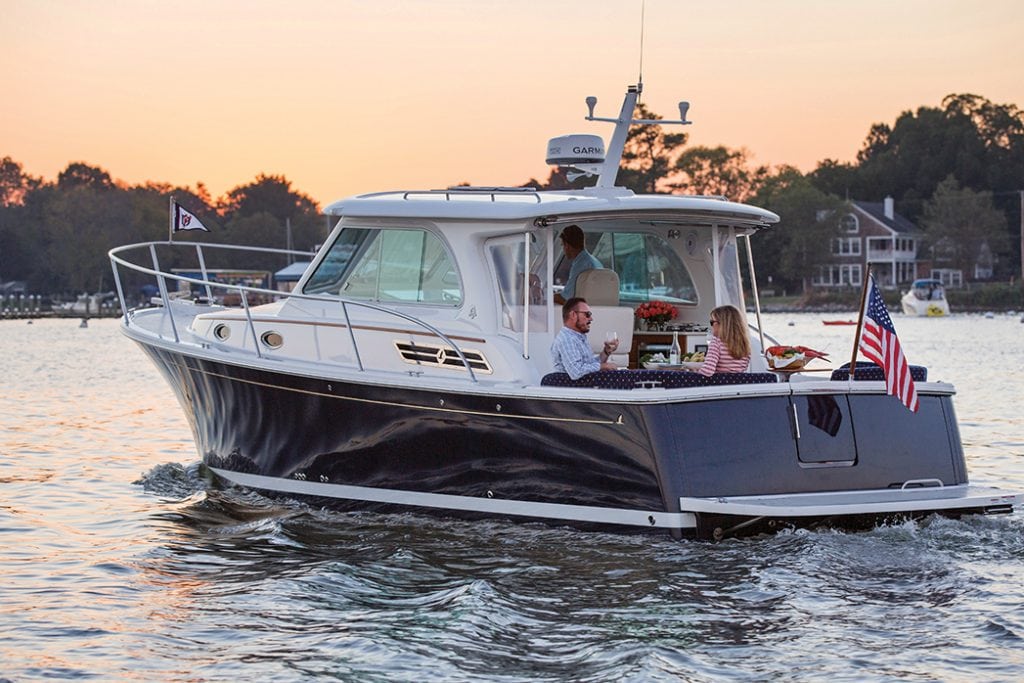Choosing to Refit is Not a Simple Decision
Know what you’re getting into before deciding to do a refit.
The decision to make some repairs or improvements on a boat seems deceptively simple; it either needs to be done, or new technology warrants a replacement of old gear, or, in the case of larger yachts, the owner loves the boat and would prefer to refit it instead of buying a new one.
A refit project is a serious undertaking no matter what’s being achieved or the size of the boat, and it always seems that even the simplest tasks can lead to more work than expected. Pulling out a fridge could easily reveal a wet, warped deck underneath that needs replacement, and how deep did the moisture go? As it’s said, “One thing leads to another,” and for most, once Pandora’s Box is open, it’s hard not to fix, repair, or replace whatever unknown issues appear.
 What’s it Worth?
What’s it Worth?
When John Crupi of Rubicon Maritime Consulting was asked to evaluate the 94-foot Sea Force IX performance sportfisherman Bonny Read for a cosmetic and mechanical systems upgrade, the owner’s first reaction when presented the initial task list was, “I can’t believe it’s going to cost this much.”
“My first steps in refitting is to take the emotion out,” says Crupi, a USCG 1,600-ton Master who captained the superyacht Dorothea and Post One sportfisherman programs worldwide for many years before starting his consulting business. “So I first said, ‘Have you evaluated your boat based on market conditions?’” (The owner had not.) “The best thing to do here, in any of these scenarios, is to figure out what your boat’s worth because regardless of how emotionally attached you are, refits are usually bad ideas because you’re spending hundreds of dollars on a depreciating asset.” Chances are, it’s more like thousands of dollars.
Crupi hired a hull surveyor, a mechanical surveyor, and an electrical surveyor, and they flew down to Costa Rico to spend four days evaluating Bonny Read, including a sea trial. At the end, Crupi subtracted 35 percent off his original value of the boat. Pandora’s Box was open.
Read this ground tackle refit article.
There are Options
Emotions affect decisions in all manner of life, and for the owner of Bonny Read, there were two decisions to make: bring the boat back to Florida and sell it as is (which could create more of a nightmare with a survey deficiency list) or refit the boat. There is a choice in the magnitude of the refit and as Crupi says, “Minimum would be fix it to sell it; Maximum is fix it because you love it.”
That was the key when deciding how far to go. When they did the walkaround and went over the original project list, the owner said, “Well, if you’re going to do all of that, I want you to do all of this.” The owner loved his boat. The boat was built for him, and emotion did play a role in his decision, but for Crupi, it was all business.
“One of the significant parts of our walkaround was the skybridge,” says Crupi. “I grew up in sportfishing, and I grew up in a town that was sort of cutting-edge, Stuart, Florida. We had Garlington, we had American, we had Tribute, we had a lot of talented guys, and on the Dorothea program, I built a boat every two years for fishing, so I knew what was going on. I told the owner the skybridge looks ancient and the boat’s only seven years old, so on the plane ride back to Florida, I sketched a drawing.”
The owner was thrilled, and a new flybridge was added to the list. As expected, that led to a number of other challenges, and just like that, you have a major refit on your hands.
“I only know one way to refit,” says Crupi, and why Rubicon Maritime Consulting does well. “It’s my job to get it from the Travelift back to the Travelift in the shortest time possible. Every day counts. Every minute counts. Every hour counts. In order for me to sign on to a big project, we have to be organized; every component that this boat needs has to be on property or damn close. Drawings are great, but when you can go up to a frequency converter that’s sitting in storage and actually build the template and bring it down [to the boat], it’s huge.”
From the Top Down and the Inside Out
There were several aspects to the Bonny Read refit. The first was chopping off the console and building a new one, which included centering up the outriggers and making the stainless steel look like it was meant to be on the boat, thus, metalwork and fiberglass work. Another involved a leaky centerline fuel tank in the cockpit. The owner wanted stabilizers, two Seakeeper 18s, which required a lot of structural work into the interior bulkheads to withstand the torque loads and reconfigure new custom fuel tanks.
“Third, everything from the forward engine room bulkhead, except the engines, was removed—every wire, every pump, both generators, and the engine exhausts,” says Crupi. The exhaust tubes needed resizing and relocating. On top of that, everything had to be accessible for service, which isn’t easy when a boat is laid out one way and needs to be redesigned another to fit the new equipment.

There are seven 24-inch monitors on board. Then there were the interior soft goods, replumbing the fresh air makeup, building the centerline soffit, millwork, varnishing, new galley appliances, upholstery, and all the cosmetic finishes.
Read more about Yacht Interior Design here.
“We brought the boat up to a level for a fishing boat that is somewhat unheard of, but it was what I would want if I was the owner going to do what he wants to do,” says Crupi. When asked if that’s how he approached all his projects, Crupi replied, “I do. I don’t pretend that I’m the owner, but I manage them as if I am.”
When it comes down to it, Crupi says the key is to spend enough time in the beginning so you can reap the rewards in the end. “I think that boat owners need to realize they’re great at what they do because they can afford these things. The smart ones understand what they don’t know. When you start tinkering with these things, they’re going down a rabbit hole that’s very expensive…. You’ve got to know what you’re getting into…. If you can’t see it finished, then don’t start it. If you don’t know what it looks like when it’s done, then don’t begin.”
-by Steve Davis
Read more Southern Boating content like this article here.


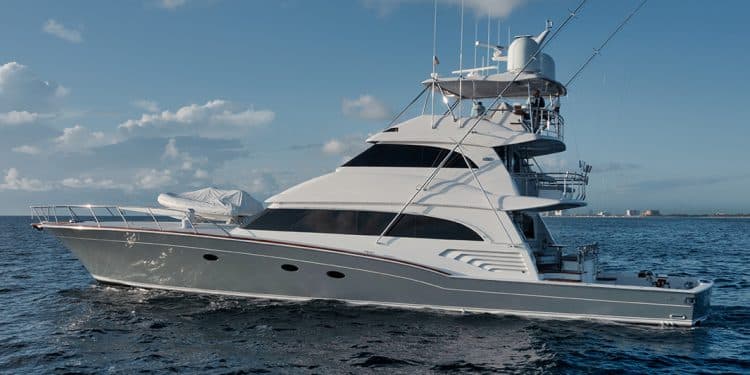
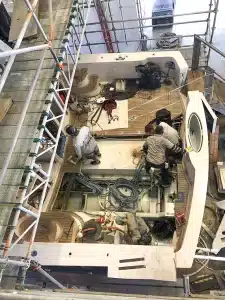 What’s it Worth?
What’s it Worth?